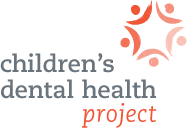Policy Options for Reducing Early Childhood Tooth Decay
Despite being largely preventable, tooth decay remains the most prevalent chronic health condition among U.S. children and adolescents. Nearly half of children entering kindergarten have had at least one cavity. Tooth decay is most common among children living in low-income households, which indicates that the current oral health care system does not adequately address their needs.
CDHP assembled a team to use system dynamics modeling (SDM) to analyze learn how evidence-based prevention strategies could impact tooth decay among young children in New York State and the state Medicaid budget. The model was supported by the Centers for Disease Control and Prevention and the Health Foundation for Western and Central New York.
Drawing on that SDM analysis, we produced this policy brief. These infographics illustrate the impact of various prevention strategies to help states reduce early tooth decay and save Medicaid dollars.
This policy brief is solely authored by the Children's Dental Health Project and does not necessarily represent the official position of the Centers for Disease Control and Prevention or other partners in the New York State SDM project.
